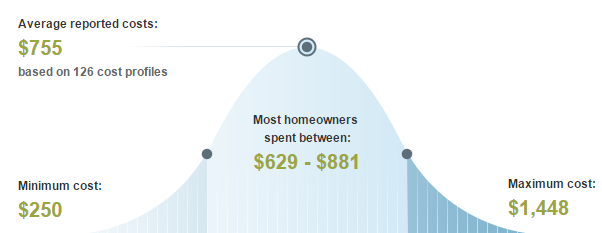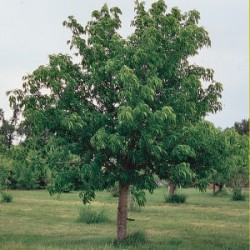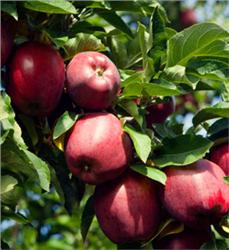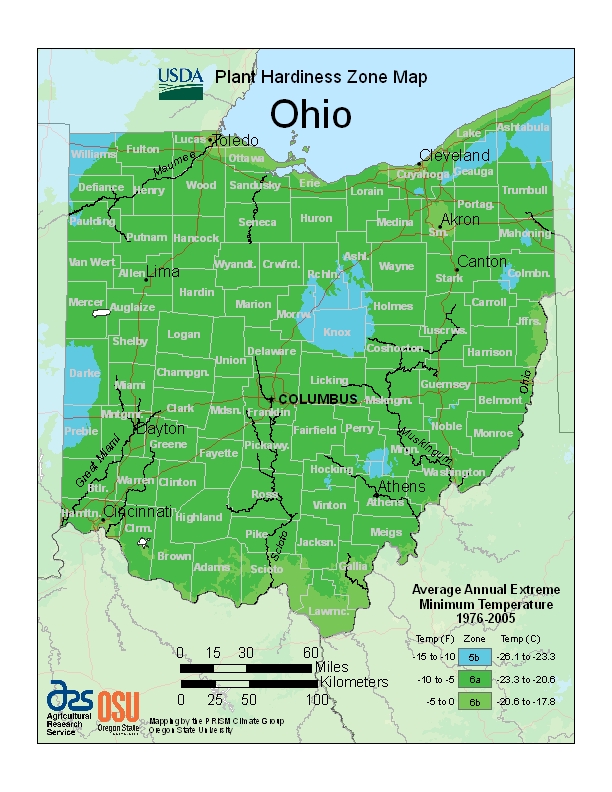Skip to a section:
How Much Do Tree Services Cost in Cincinnati?
Although minor tree maintenance can be completed by homeowners, the more involved removal of limbs and entire trees may require a professional. Costs in this temperate Midwestern state are very affordable when compared to national averages. Homeowners can find some professional services for less than $100, and removing a small tree usually costs less than $300.

How Much Does Tree Removal Cost?
The costs for removing trees in Cincinnati, Ohio, range from $250 to $1,270. The price usually depends on the tree size, location and whether or not it has already been felled. Living trees that need to be cut down because they are too close to power lines may cost more to remove. The average cost for tree removal in Cincinnati is about $720.
How Much Does Stump Removal Cost?
After cutting the tree down, the tree stump should be removed. Even homeowners who take on the task of cutting down their own trees may want to hire a professional for tree stump grinding. It costs between $78 and $143 to remove one medium-sized tree stump. A large tree stump costs between $83 and $143 to remove. These estimates typically include the delivery of special equipment and the hourly rate for a licensed contractor as well as the costs for preparing the work site for removal and cleaning up debris afterwards.
Average Cost of Tree Maintenance in Cincinnati
Homeowners can keep trees from becoming a problem with regular tree trimming and maintenance. Hiring a professional tree-trimming service costs homeowners between $75 and $250 depending on the size of the trees and the number of trees that need maintenance. The average cost for tree trimming and maintenance in Cincinnati, Ohio, is about $194.
Cincinnati Tree Facts & FAQs
Ohio offers homeowners an excellent climate for gardening and landscaping. It can be tempting to start planting with abandon. However, when trees get too large for the yard or wind up being too close to power lines, it causes problems. A little research into Cincinnati, OH, tree regulations and the best trees for the state helps prevent such difficulties.
Cincinnati Tree Service Tips and Regulations
In the state of Ohio, there are no major regulations regarding tree trimming and removal on private property. Homeowners in Cincinnati are responsible for maintaining the health of their trees by trimming away any diseased or rotting branches. The same applies to removing diseased and rotting trees. If a neighbor’s tree grows limbs onto the homeowner’s property line, the homeowner has the right to trim the part of the branch that is on their property. It is good practice to speak with the neighbor before trimming as the neighbor must give permission for anyone climb up the tree. The best time to trim trees in Ohio is in the winter when the tree is dormant. However, light pruning may be completed at any time of the year.
It is the duty of the electrical company in Ohio to keep trees pruned around electrical lines. The cost for this service is usually factored into electrical fees for all customers.

Ohio State Tree
The state tree is the buckeye. First designated in 1953, this medium deciduous tree grows up to 85 feet in height. It is recognizable by the spiked green pods its branches produce over the course of the summer. By fall, these pods dry out, and the husks come off to reveal a shiny, dark-brown buckeye nut. Carrying a nut in a pocket is considered good luck. Ohio State University’s football team is named the Buckeyes after this beloved tree.
Common Trees
With summer temperatures reaching up to the 90s and winters dropping below freezing, trees grown in Cincinnati must be able to withstand temperature extremes. Luckily, there are a number of hardy deciduous trees that enjoy this climate. Homeowners will find that these trees are attractive and provide plenty of shade.
- Trident maple (Acer buergerianum)
- Sweet buckeye (Aesculus flava)
- Kentucky yellowwood (Cladrastis kentukea)
 All these trees grow to moderate heights of about 50 feet. They produce colorful foliage in the fall. Fruiting trees are also popular in the Midwest where homeowners embrace self-sufficiency with small backyard gardens. These fruiting trees are best suited for the climate:
All these trees grow to moderate heights of about 50 feet. They produce colorful foliage in the fall. Fruiting trees are also popular in the Midwest where homeowners embrace self-sufficiency with small backyard gardens. These fruiting trees are best suited for the climate:
- Bartlett pear (Pyrus communis)
- Methley plum (Prunus salicina)
- Red apple (Malus x domestica)
- Bing cherry (Prunus avium)
Cincinnati, Ohio, is a good place to grow nut trees as well. Homeowners can grow them for local squirrels or harvest the bounty for their own baked treats. Popular nutting trees are:
- Black walnut (Juglans nigra)
- Butternut (Juglans cinerea)
- American hazelnut (Corylus americana)
It can take up to a decade before a tree starts producing nuts. Homeowners who are impatient to see some results may want to look to a fruit tree which starts bearing within two to five years.
Diseases That Affect Trees
Like many other areas of the world, the forests and yards of Cincinnati, Ohio, are prone to certain tree diseases. Homeowners should take care to keep an eye out for the diseases and insects that most commonly affect Ohio trees. The emerald ash borer is an insect that has caused major damage to ash trees throughout the state. Any tree found with an ash borer infestation is immediately cut down. Surrounding Ash trees may also be cut down as a precautionary measure.
Oak trees are susceptible to a number of ailments, including oak wilt, lucidus root and butt rot. Galls can also affect the tree, which is an infection caused by insects or mites. Walnut tree owners should keep an eye out for thousand cankers disease, which is caused by a fungus carried by the walnut twig beetle. Other diseases known to strike a wide range of trees in the Cincinnati area are fusiform rust, amillaria root rot, anthracnose and leaf spot disease.
Plant Hardiness Zones in Ohio
Here are the plant hardiness zones for Ohio as provided by the USDA:

Image credit:
Red apple
Local Tree Services in Cincinnati
